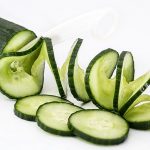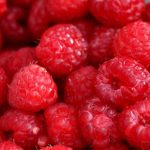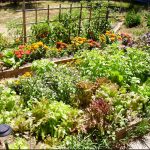Keeping Healthy With Summer Squash
Table of Contents
Squash has had a long legacy as a healthy staple food for thousands of years in North America. In fact, the Native Americans introduced squash to the European settlers and showed them its huge value.
Believe it or not, summer squash is related to melons and cucumbers, and belongs to the family Cucurbitaceae. A few different types of squash in existence include: cylindrical squash, patty pan squash, and constricted neck squash. Patty pan squash can be many colors, running the spectrum from green to yellow to white. Constricted neck squash, which itself comes in a few sub-varieties, can be green or yellow. Cylindrical squash includes a few different sub-types as well, like zucchini and caserta.
If you’re interested in planting squash, be sure to wait until there is no chance of frost. To make for a longer, more spread-out harvest, you might try planting the squash twice a year, once in the spring and once in the summer. Plant your seeds in groups of about two or three, and thin the group down to the strongest plant as they grow.
Make sure that the soil not only can drain well, but that it is full of compost and organic material for maximum results. Summer squash is a fast grower and can be ready to pick merely four to eight days after it flowers. By the way, you can also eat the flowers of this plant if you wish.
Summer Squash Nutritional Values
Cooked Squash
Serving Size – 1/2 cup (90g)
Amounts Per Serving % Daily Value Calories 20 Calories from Fat (5) Total Fat (0g) 0% Saturated Fat (0g) 0% Sodium (0g) 0% Total Carbohydrate (4g) 1% Dietary Fiber (1g) 4% Sugars (2g) Protein (1g) Vitamin A 4% Vitamin C 8% Calcium 2% Iron 2% Raw Squash
Serving Size – 1/2 cup, cubed (98g)
Amounts Per Serving % Daily Value Calories 20 Calories from Fat (0) Total Fat (0g) 0% Saturated Fat (0g) 0% Sodium (0g) 0% Total Carbohydrate (5g) 2% Dietary Fiber (1g) 4% Sugars (1g) Protein (1g) Vitamin A 15% Vitamin C 10% Calcium 2% Iron 2%
Why Squash is so Healthy
In spite of a low caloric value, squash has very high amounts of micronutrients like Vitamin C and Vitamin A, which are both important antioxidants. These vitamins help prevent strokes and heart attacks, and can help keep your blood pressure in check. In addition, summer squash is good for your colon because it is high in fiber.
Summer squash fruits and blossoms can be enjoyed in many ways including: raw, steaming, boiling, baking, grilling, stir-frying, sautéing and frying. Summer squash fruits can be blanched and frozen, but canning is not recommended unless pickled.
Concerns and Cautions
Two common pests that occur when growing summer squash are cucumber beetles and squash bugs. Both of these pests can attack both the plant and the fruits. They best way to control these pests is with the use of insecticides (there are many organic options) while the infestation is small to prevent the numbers from multiplying and destroying your crop.
It is important when choosing summer squash look for squash that feel firm and heavy for their size in order to reduce the chance of the squash having a dry texture. Summer squash are on the delicate side and require gentle handling due to their thinner skin.
Source: GardeningChannel


















